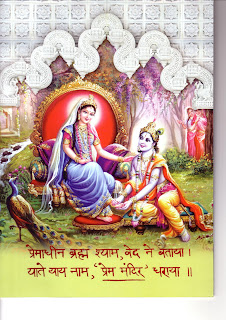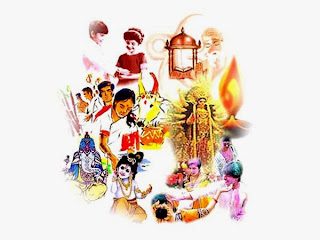Who Am I

(Synopsis of a lecture given by Jagadguru Shri Kripalu Ji Maharaj on October 20, 2009, Bhakti Dham, Mangarh)
All souls have certain questions: Who am I? What is mine? Someone might be surprised to hear these as it seems obvious we should know who we are and what is ours, but do you truly understand them? No, you don’t. In fact, only one out of millions understands the answer to these questions, but it is essential we know them.
The Kena Upanishad (2/5) states, “Oh human beings! You must find the answer to these questions in this lifetime, otherwise great harm will befall you.” What is that harm? The Katha Upanishad (2/3/4) says for millions for ages you will suffer as you are suffering now. We all experience various kinds of sufferings and binding effects of Maya. There are the 3 tap, the 5 klesh, the 5 sheaths, the 3 kinds of bodies, the 3 material qualities, the 3 kinds of karma – these produce unlimited mental and physical suffering. You will have to undergo all of these for millions of ages.
In the world, two kinds of substances are described – one is jar or lifeless, and that other is chetan or live. There is no third kind of substance that exists. A lifeless substance is made of the five material elements. It has no power of discrimination or thinking. A live substance refers to all the living beings. We use all our senses, think and make decisions. “You” are also included among all these substances.
When we are alive, we are labeled a human being, but after we die, we are not considered the body. We say, “He left today and now only his body is here.” Then who left? That part which is live. What remains behind is the lifeless part. We are actually two – one “I” is live, the other “I” is lifeless.
Uddhava once asked Shri Krishna, “Who is the greatest fool?” Shri Krishna’s response was, “The one who considers himself to be the body.” Yet, we continue to consider those to whom the body is related to be our true relatives, and that property owned by the body to be ours. We believe this in spite of seeing the temporary and destructible nature of everything in this world.
Our true “I” or self is the soul, which has two qualities: (1) it remains alive, and, (2) it gives life to another. For example, if you put a small candle in a room, the whole room will be illuminated. If you remove the candle, the room will enter into darkness. Similarly, the soul enlivens the human body, and when it leaves the body, only a lifeless corpse remains.
When the soul leaves the body, it doesn’t go alone. It leaves with senses, mind, intellect and body. Someone who is seeing a dead body before them might be surprised by this statement. How can we say the soul left with the body when the body is lying before us? We actually possess three bodies: (1) gross or sukshma, (2) subtle or sthool, and (3) causal or karan. The soul leaves the gross body and senses behind and leaves with the subtle senses, mind, intellect and body.
What then is the “I”? The simple answer is whatever is “yours” is not “you.” Just as we say, “My head hurts”, “I can’t believe my ears”, “My house burned down” and so on, so your head, ears and house belong to you; you would never consider yourself to be the head, ears or house. That inner you is the soul. But how can one know this in actual fact?
All our faculties for sensing, knowing and deciding are material. When even the material world can’t be fully grasped by material senses, how could we know the soul, which is divine and extremely subtle? Great scientists who explore the farthest reaches of the universe still are ignorant as to what is the soul. How could it be detected? There is no measurement that could measure its presence.
So when we cannot have direct perceptual proof of the soul, and we doubt inferential proof of its existence, only one kind of proof remains – shabda praman or divine scriptural knowledge. Scriptural knowledge is of two kinds: (1) nitya, and (2) sadi. Sadi proof is revealed in the writings of Saints who have attained divine knowledge. Nitya proof is the knowledge of the eternal Vedas with is one with God.
In the beginning, the Vedas emerged from God’s mouth through His breath. At that time, Brahma also emerged from His navel. God said, “Learn the Vedas and then start creation.” Brahma tried for thousands of years, but he could do neither. God was seated in Brahma’s heart, and from there He graced him and only then did Brahma gain understanding of the Vedas, and of who he was and what he was to do.
We can also determine “Who am I” through the knowledge of the Vedas, but we have to gain this understanding through someone who already has that practical knowledge, a true Saint. For example, many words such as prana or life breath, atma or soul, and jeev or living being come in the Vedas, but have an opposite meaning. They all instead refer to supreme God. In addition to this, the Vedas are considered the form of God, which means they are automatically beyond the understanding of a human material intellect. Yet, if that knowledge is not gained, you can’t understand “Who am I” and “What is mine” and you must understand the answer to both of these.



Comments
Post a Comment